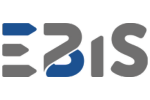Power BI in HR
Power BI in HR
In the business environment, HR departments play a key role in human resource management and in shaping personnel strategies that support organizational goals. In this context, data analysis tools such as Power BI, which we implement and configure as a certified Microsoft partner, become indispensable for effective personnel management and accurate personnel decisions.
Power BI enables HR teams to monitor and analyze a variety of employee-related data, such as turnover rates, employee engagement, compensation analysis and training effectiveness. As a result, HR professionals can accurately analyze organizational structure, identify trends in employee behavior, and take actions that support workforce development.

Benefits of implementing Power BI in Human Resources with Microsoft partner EBIS
Monitor budgets based on continuously updated data
Power BI enables analysis of key HR metrics, such as employee turnover, absenteeism and recruitment effectiveness, which allows you to better understand your organization’s HR situation and make informed HR decisions.
Access to data anytime, anywhere
The data needed for analysis in the organization is updated in real time, and it can always be accessed – from a browser and mobile devices.
Monitoring of sales channels
By analyzing training effectiveness data, Power BI makes it possible to evaluate training effectiveness and identify areas for improvement, leading to better use of training resources.
Monitor budgets based on continuously updated data
This tool allows you to monitor employee engagement by analyzing data on survey results, employee evaluations or training participation, allowing you to identify areas for improvement and motivational measures.
Access to data anytime, anywhere
The tool supports salary and benefit management by analyzing data on salary structure, components of social packages or market trends, which allows to adjust the offer to the needs of employees and competitiveness in the labor market.
Monitoring of sales channels
Microsoft Power BI enables monitoring of key performance indicators such as working time, activity efficiency and absenteeism rates to manage human resources better and identify areas for optimization.
When is it a good idea to implement Power BI?
Implementing Power BI in the HR department can bring numerous benefits to companies, especially in human resource management and optimization of HR processes. In the face of today’s recruitment, retention and HR data analysis challenges, this tool can provide crucial support. Power BI enables real-time analysis of HR data, allowing quick response to changes in HR and optimization of HR processes.
Power BI ermöglicht die Verfolgung wichtiger Kennzahlen zur Personalleistung, wie z. B. Mitarbeiterfluktuation, Fehlzeiten oder Rekrutierungseffizienz. Dank personalisierter Dashboards und Berichte können HR-Manager diese Kennzahlen in Echtzeit überwachen, Bereiche identifizieren, die Aufmerksamkeit erfordern, und vorbeugende Maßnahmen ergreifen.
One of the key challenges for the HR department is effective management of the recruitment process and employee retention. Power BI enables analysis of data on recruitment process effectiveness, hiring costs, and retention rates, allowing for the identification of the most effective recruitment strategies and the application of best practices.
With advanced data analysis features, Microsoft Power BI enables effective planning of employee skills development and training. HR managers can analyze training needs, evaluate training effectiveness, and track employee progress, enabling effective management of the skills development process and increased employee engagement in the long term.
Want to implement Power BI in your HR? – We can help!
The EBIS team has been supporting companies in the effective use of data in the Human Resources area for years. We help organizations from various industries implement Microsoft Power BI analytical tools – from needs analysis, through integration with HR systems, to training and development of team competences.
Together we can:
automate HR reporting,
simplify KPI and retention analysis,
increase the transparency of personnel processes.
They trusted us






